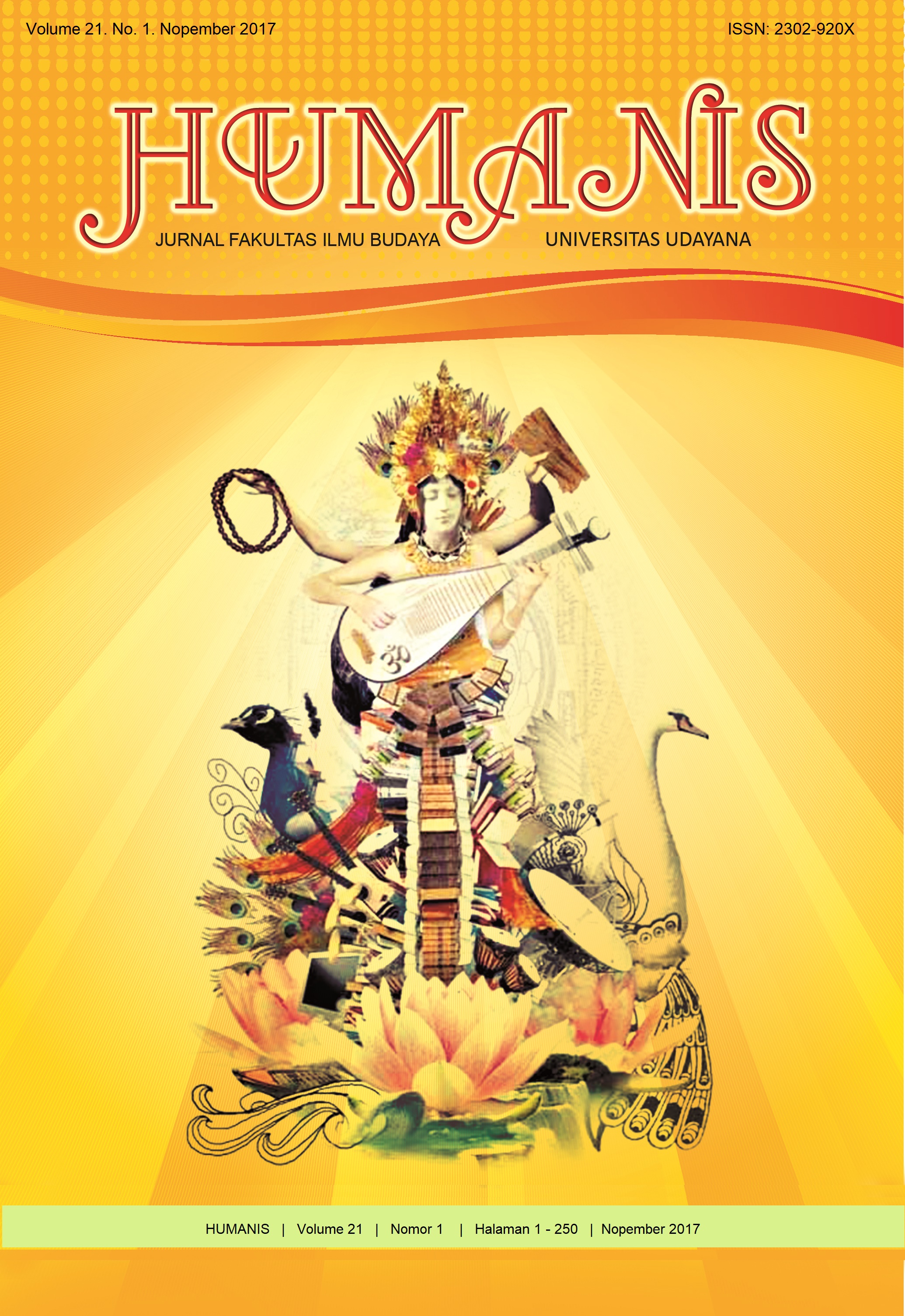Kontrastivitas Kata Majemuk Bahasa Jepang dan Bahasa Bali
Abstract
This research is titled “The Contrastive of Japanese and Balinese Compound Words”. The research analyzed the connection and meaning between each elements both Japanese and Balinese compound words; furthermore, the similarities and diferentiations between them. This research used morphology theory by Ramlan (2009), semantic theory by Kridalaksana (2001) and contrastive linguistics by Pranowo (1996). The results of this research showed that the elements’ connection of Japanese compound words consist of complementary connection, explaination connection and opposite connection. The elements’ connection of Balinese compound words are described as follows: the first element is explained by second element;moreover, they coordinate each others, one of the elements is unique morphem; in addition, the first element explain the second element. Both compound words made an idiom, semi idiom, and non idiom meaning. It found that Japanese and Balinese compound words have a similarities in some connections such as explanation connection and opposite connection (coordinate element in Balinese), which made an idiom, semi idiom and non idiom meaning; moreover, formed by free morphem and got an affixes. Another diferentiation in Japanese compound words there is an additional complementary connection, besides, there is an elements that have a phonemic change, addition and removal when they are combined. The elements could be a word which has renyoukei process,and conjugation; further, there are a compound words that elements are read in kunyomi and onyomi. Meanwhile, in Balinese compound words, one of the elements could be a unique morpheme.


















